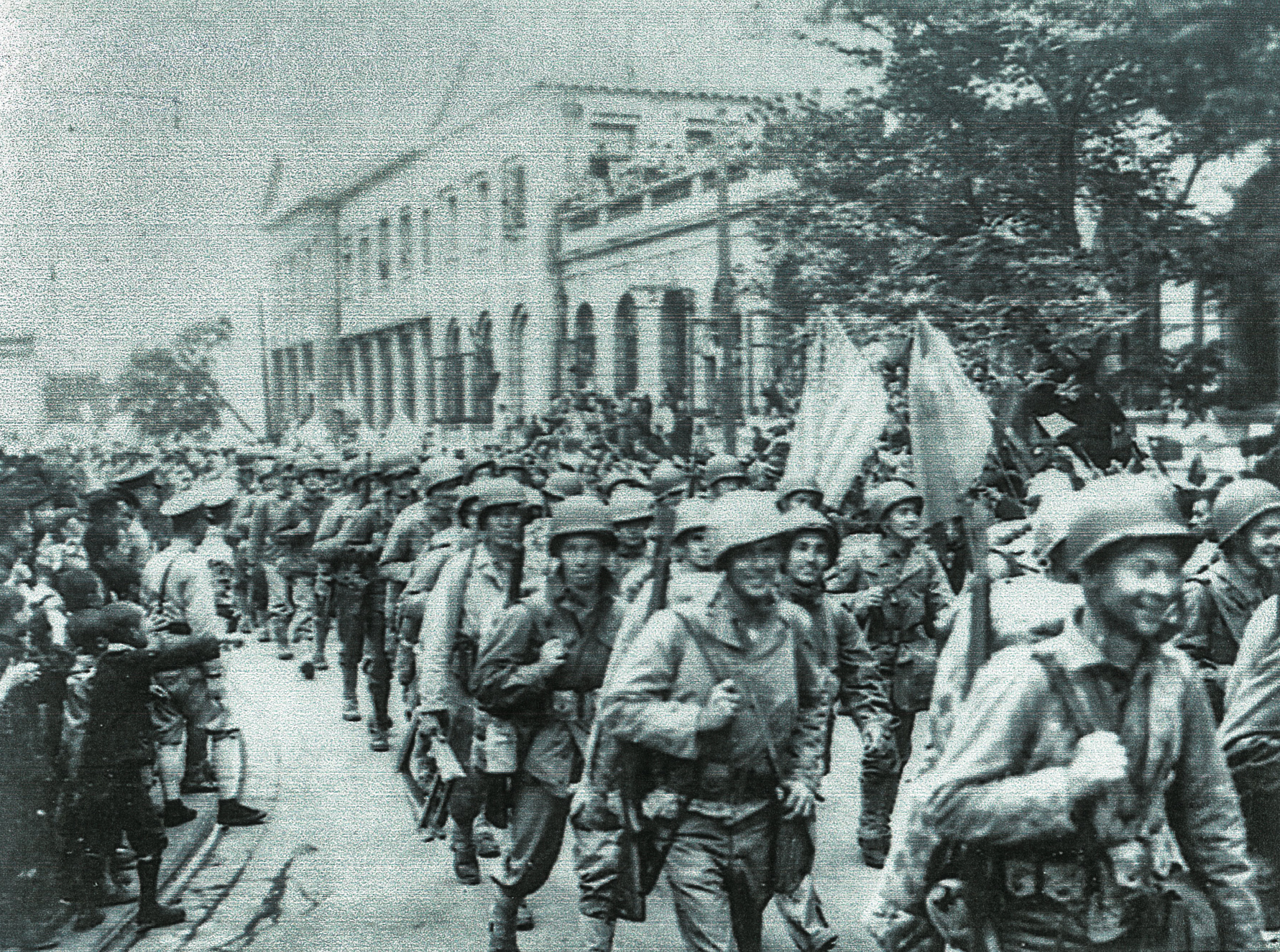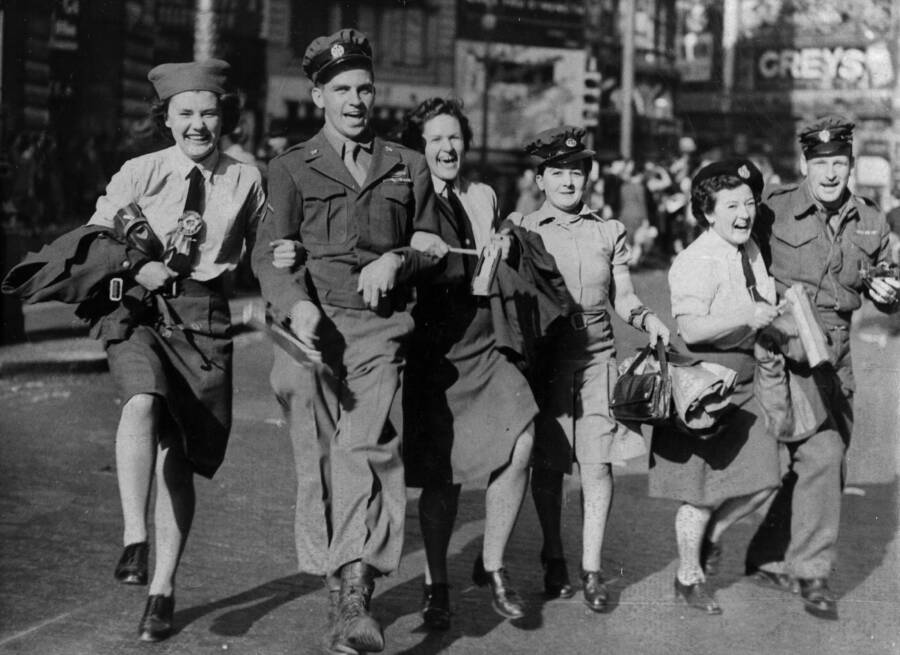


Yet despite all the action in the streets around the world, Japan's official surrender had yet to be formally signed. In San Francisco, V-J Day festivities turned into a riot as thousands of Navy men took to the streets, injuring 1,000 people, killing 13, and raping six known victims. However, some celebrations devolved into violence. In time, there would be a more considered, reflective take on the war and on the enemies America had fought so brutally, and at such cost, for so long. "Booze flowed inhibitions were cast off there were probably as many fists thrown as kisses planted: in other words, once the inconceivable had actually been confirmed and it was clear that the century's deadliest, most devastating war was finally over, Americans who for years had become accustomed to almost ceaseless news of death and loss were not quite ready for a somber, restrained reaction to the surrender. A 1945 examination chronicled the moment in time as follows: From the United States to Europe, Allied forces and everyone else impacted by the horrors of WWII breathed indescribable sighs of relief. 15.Īfter these announcements, V-J Day celebrations swept the world. As a result of timezone differences, the President's press conference at the White House fell on the day before - explaining why V-J Day is celebrated in the U.S. The Japanese government issued a statement accepting the Potsdam Declaration terms in the early afternoon of Aug.

This is the day when Fascism finally dies, as we always knew it would." Truman declared, "This is the day we have been waiting for since Pearl Harbor. "Should we continue to fight, it would not only result in the ultimate collapse and obliteration of the Japanese nation but would also lead to the total extinction of human civilization," he said. He explained it was America's use of a "new and most cruel bomb" that left him and the military no further options. Victory Over Japan DayĮmperor Hirohito's historic radio address heard him urge his people to surrender. The untold mass death visited upon Japan ultimately led Emperor Hirohito to address the nation on Aug. 9, America dropped another atomic bomb on Nagasaki, killing between 39,000 and 80,000 people. Two days later, Soviet troops invaded Japanese occupied territory in Manchuria, forcing Japan to fight the war on two fronts. 6, after the Tokyo-based officials opted for the latter, America's B-29 Enola Gay plane dropped an atomic bomb on Hiroshima.įive square miles of the city flattened, causing 90,000 to 146,000 casualties. The document promised Japan's people a peaceful government should its leaders agree to capitulate - and "prompt and utter destruction" if they refused. On July 26, Allied leaders called on Japan's surrender by issuing the Potsdam Declaration. began ramping up bombardments of Japan.īetween March and July of 1945, Allied forces dropped an estimated 100,000 tons of bombs on over 60 Japanese towns and cities from the air and sea. To tighten the noose and force capitulation, the U.S. Though Victory in Europe Day (V-E Day) arrived on May 8, 1945, and the Nazis had formally accepted defeat, Allied celebrations were hampered as the war still raged on in the East. Over the next three years, the Allies - technologically and productively superior to Japan - fought a rather one-sided war in the Pacific.

This led to an enormous escalation in the European Theater, as American troops pushed into the continent and Nazi Germany was forced to fight on two fronts. as the Tripartite Pact agreement demanded. Once America officially declared war on Japan, Nazi Germany declared war on the U.S. had been deteriorating for years before the bombings of the Pearl Harbor naval base turned them violent. In the beginning, Japan's own devastating attack on Pearl Harbor in December 1941 led the U.S. However, some V-J Day celebrations took a violent turn.Īnd the bloody journey to get to these scenes of ecstatic revelry took a terrible toll on people around the world. These incredible historic photos show jubilation and relief around the world, from Times Square to Shanghai, as soldiers and civilians alike celebrated the end of the war. Some 65 million people around the world died as a result of the conflict, and millions more suffered injuries, hunger, fear, and grief. However, on August 14, 1945, when news broke of Japan's surrender to Allied forces, spontaneous celebrations broke out around the world.Īfter all, Japan's surrender marked the end of World War II, the bloodiest battle the world had ever seen. Today commemorations of V-J Day are tempered by somber remembrances of the lives lost in the atomic bombings of Hiroshima and Nagasaki.


 0 kommentar(er)
0 kommentar(er)
